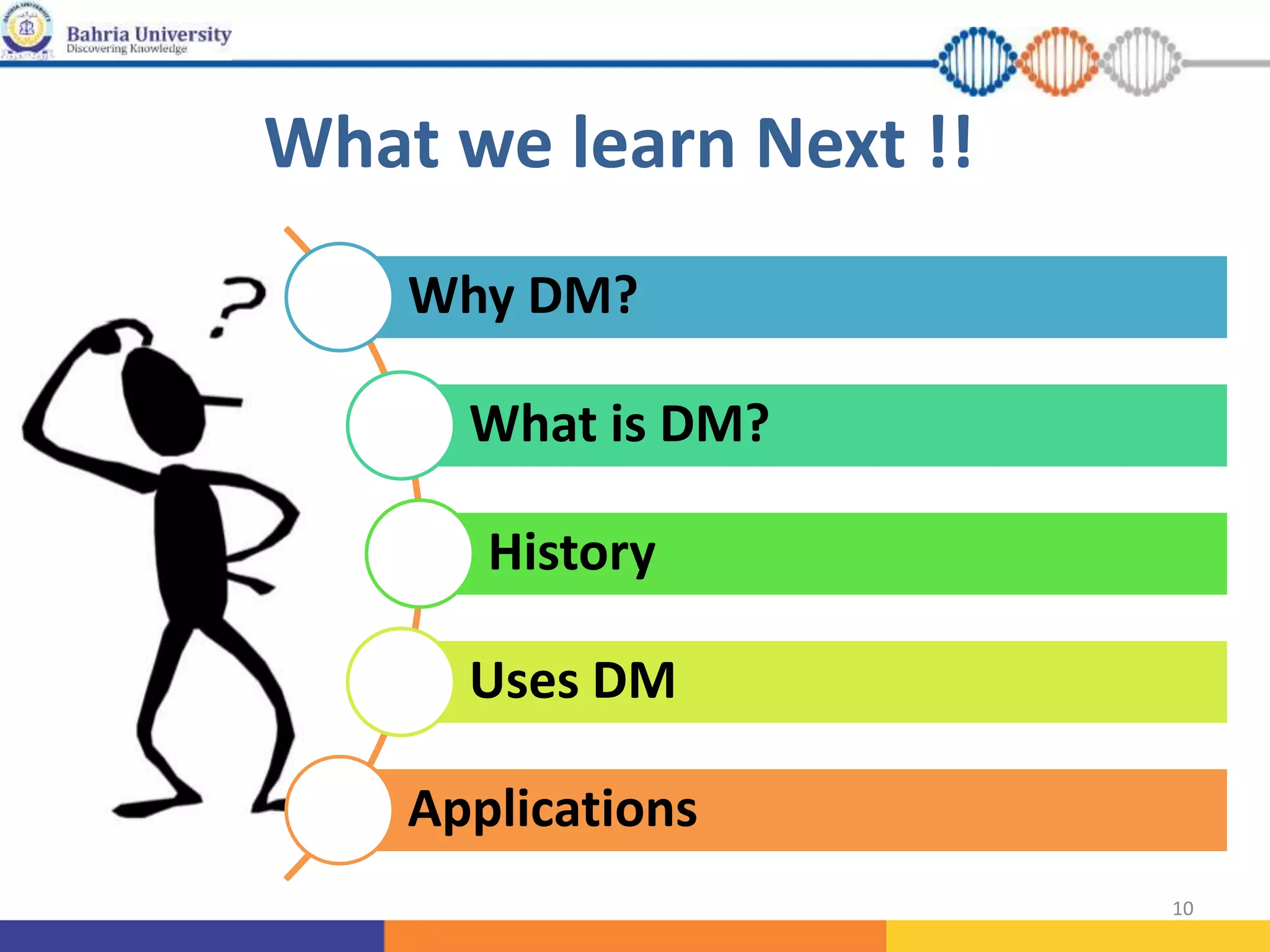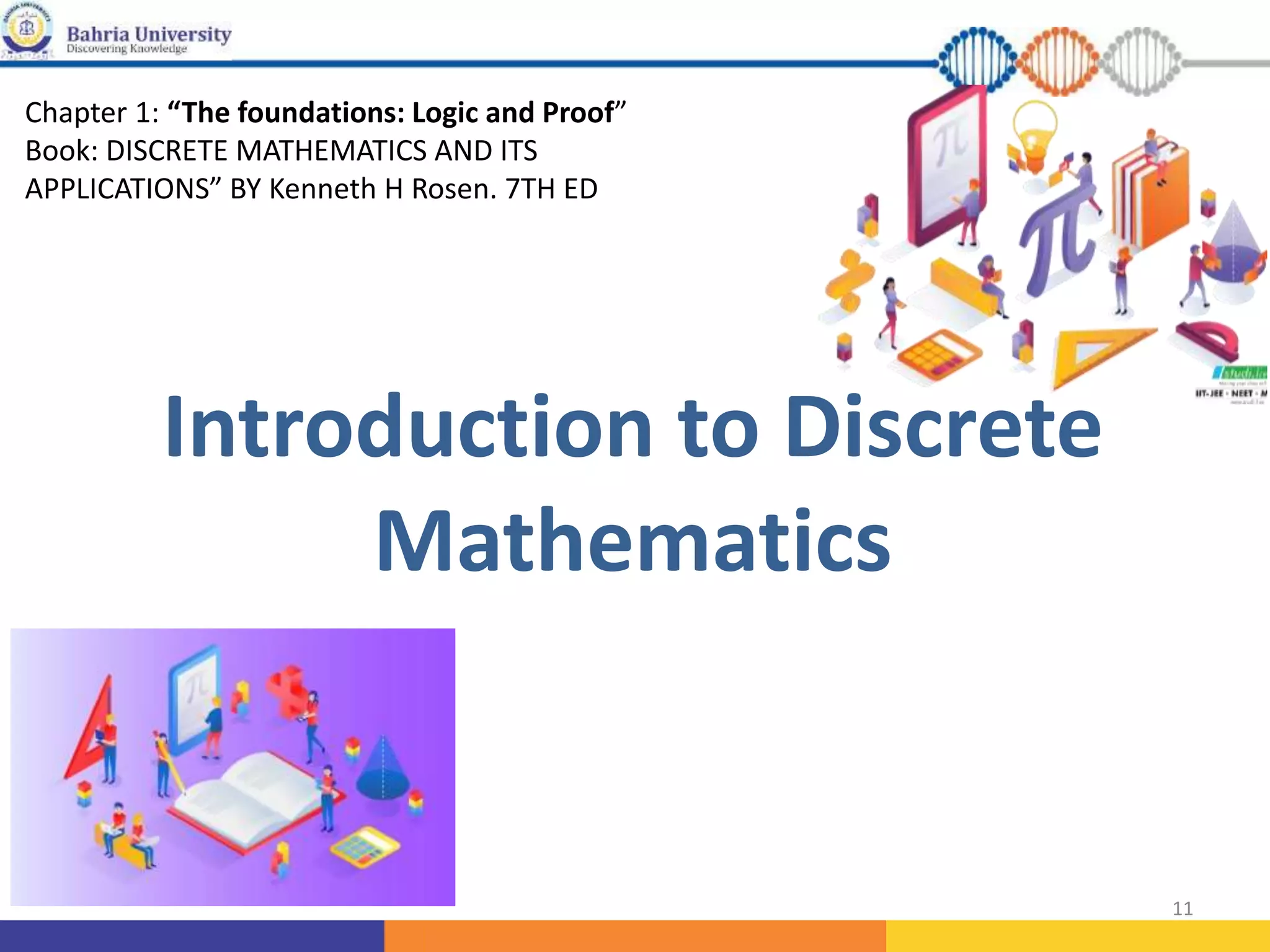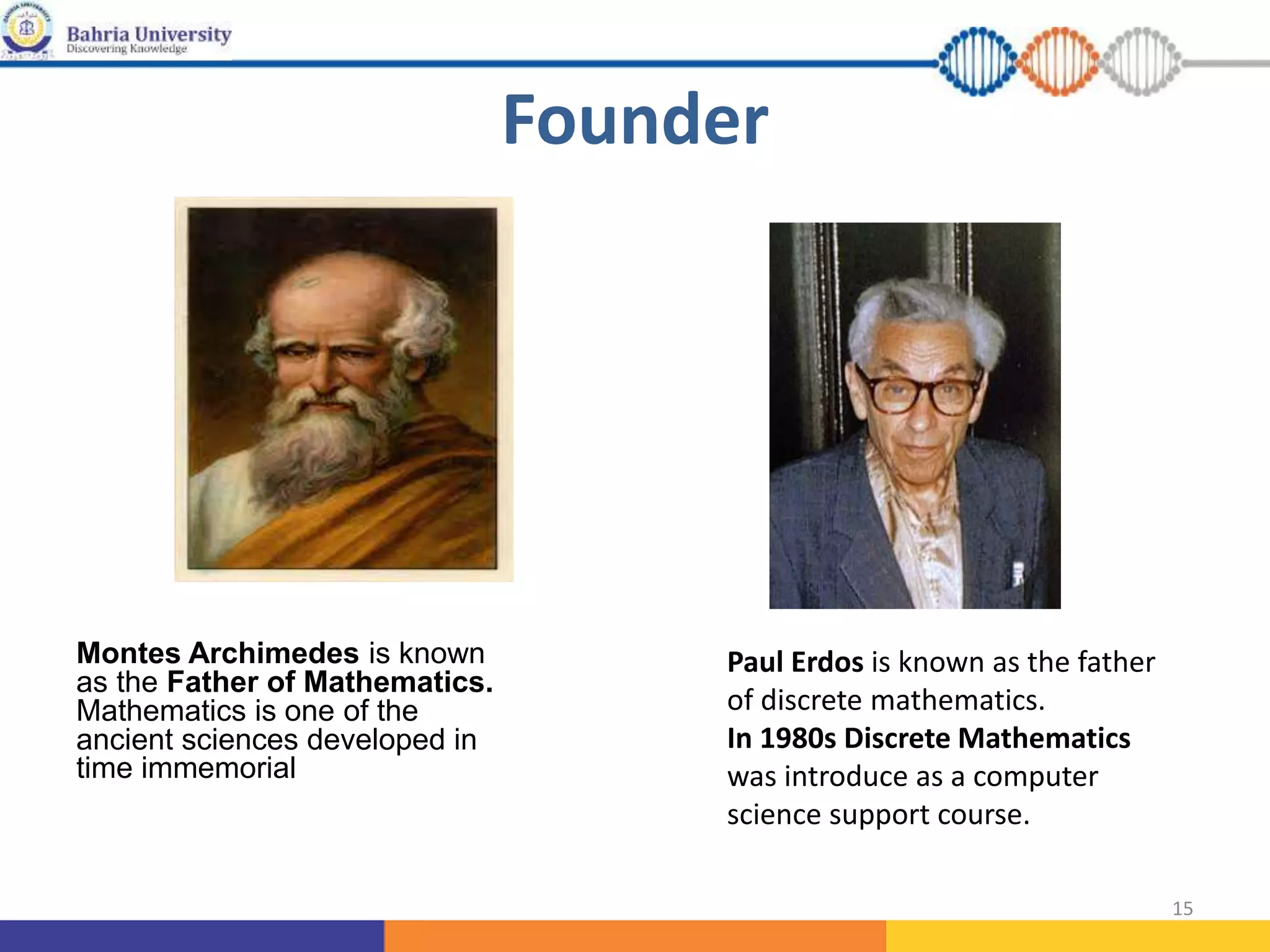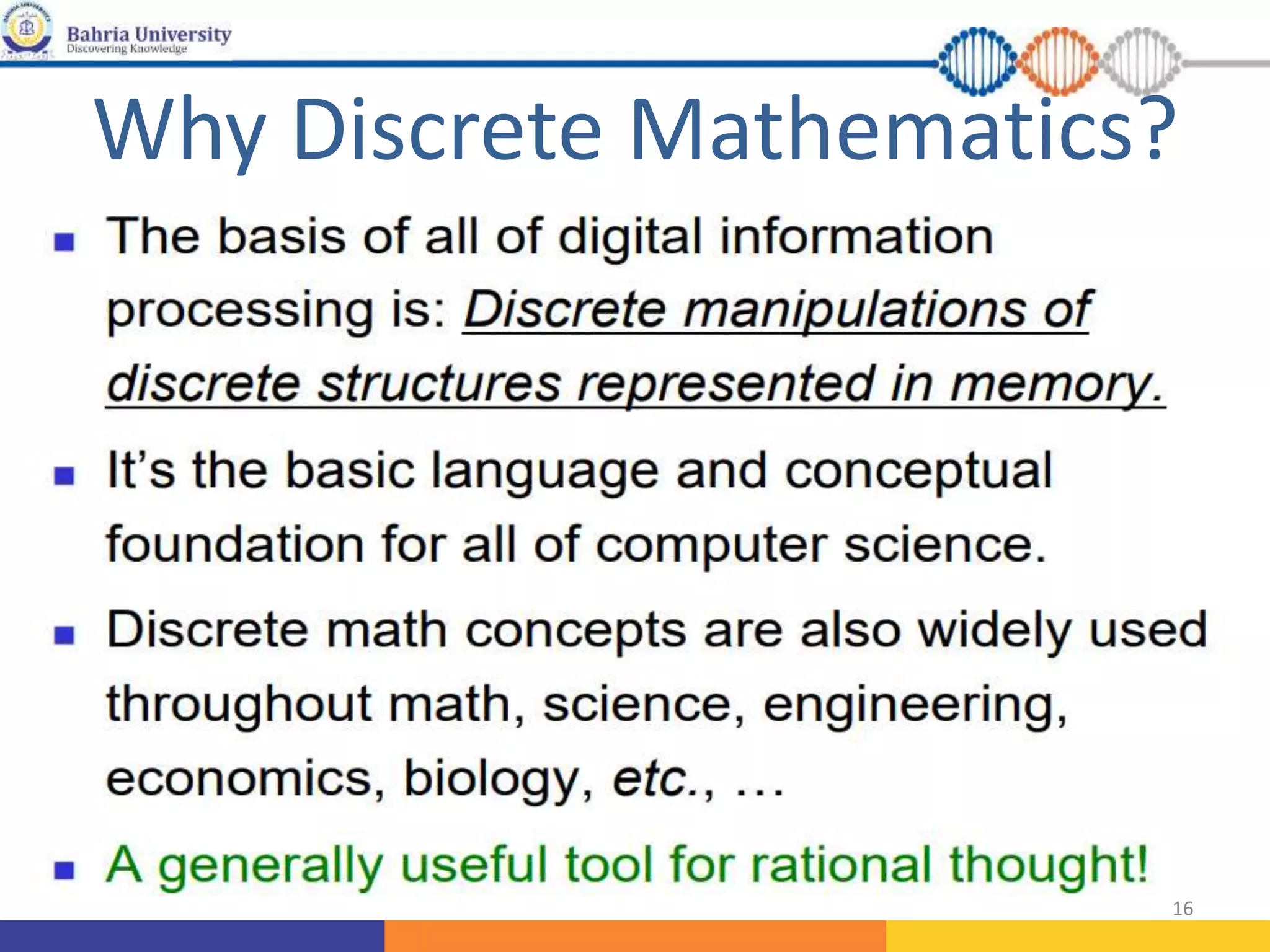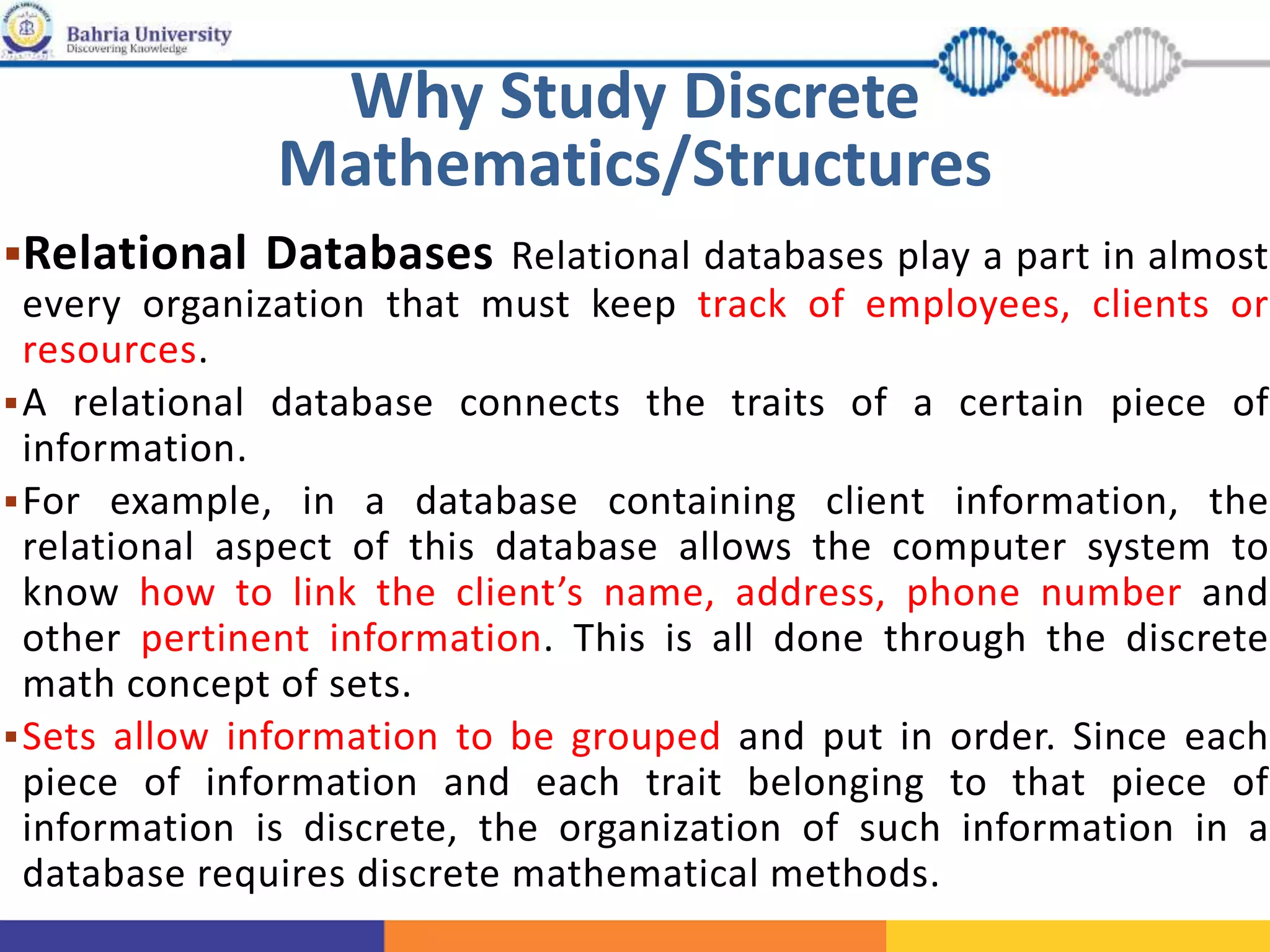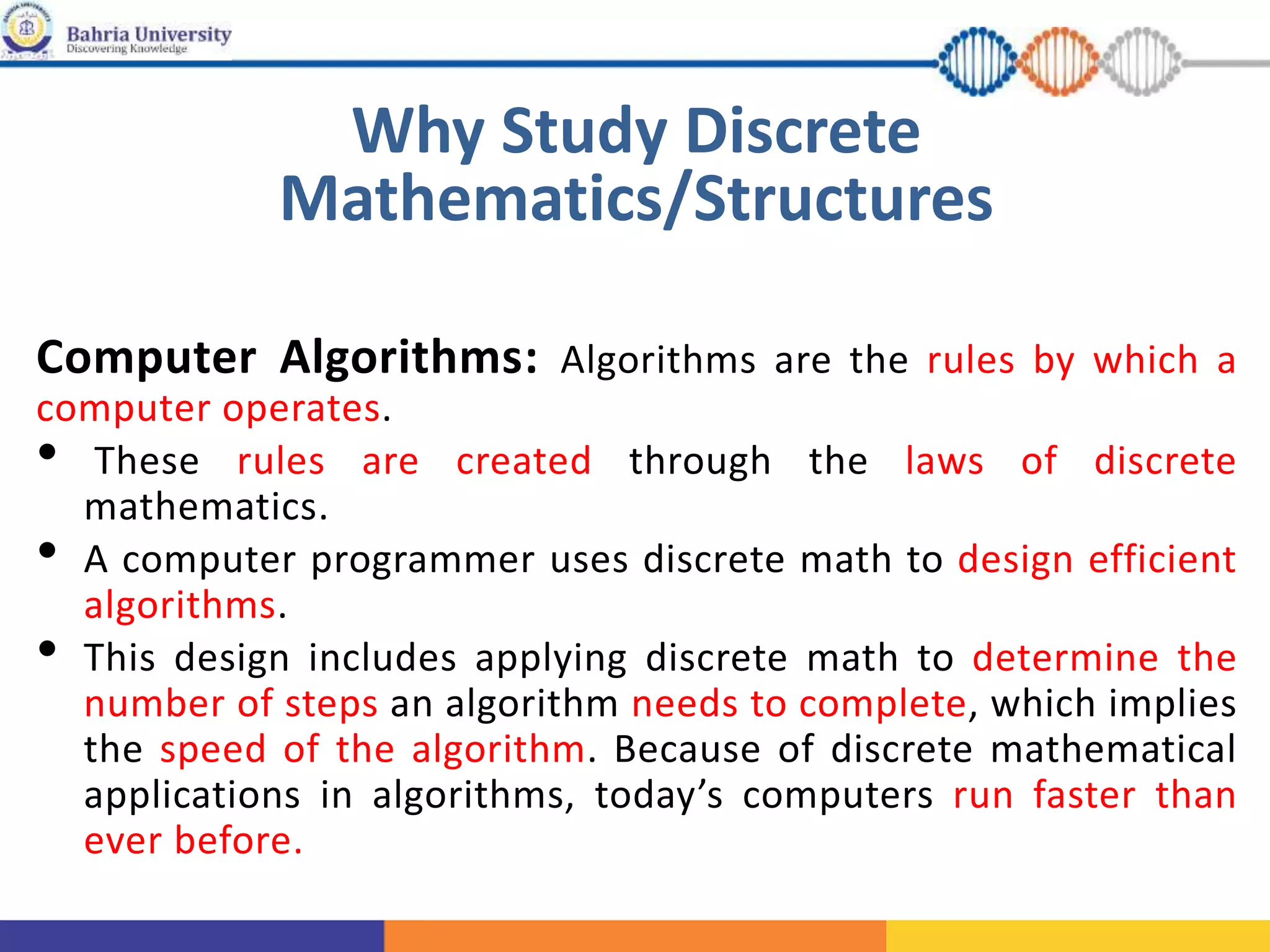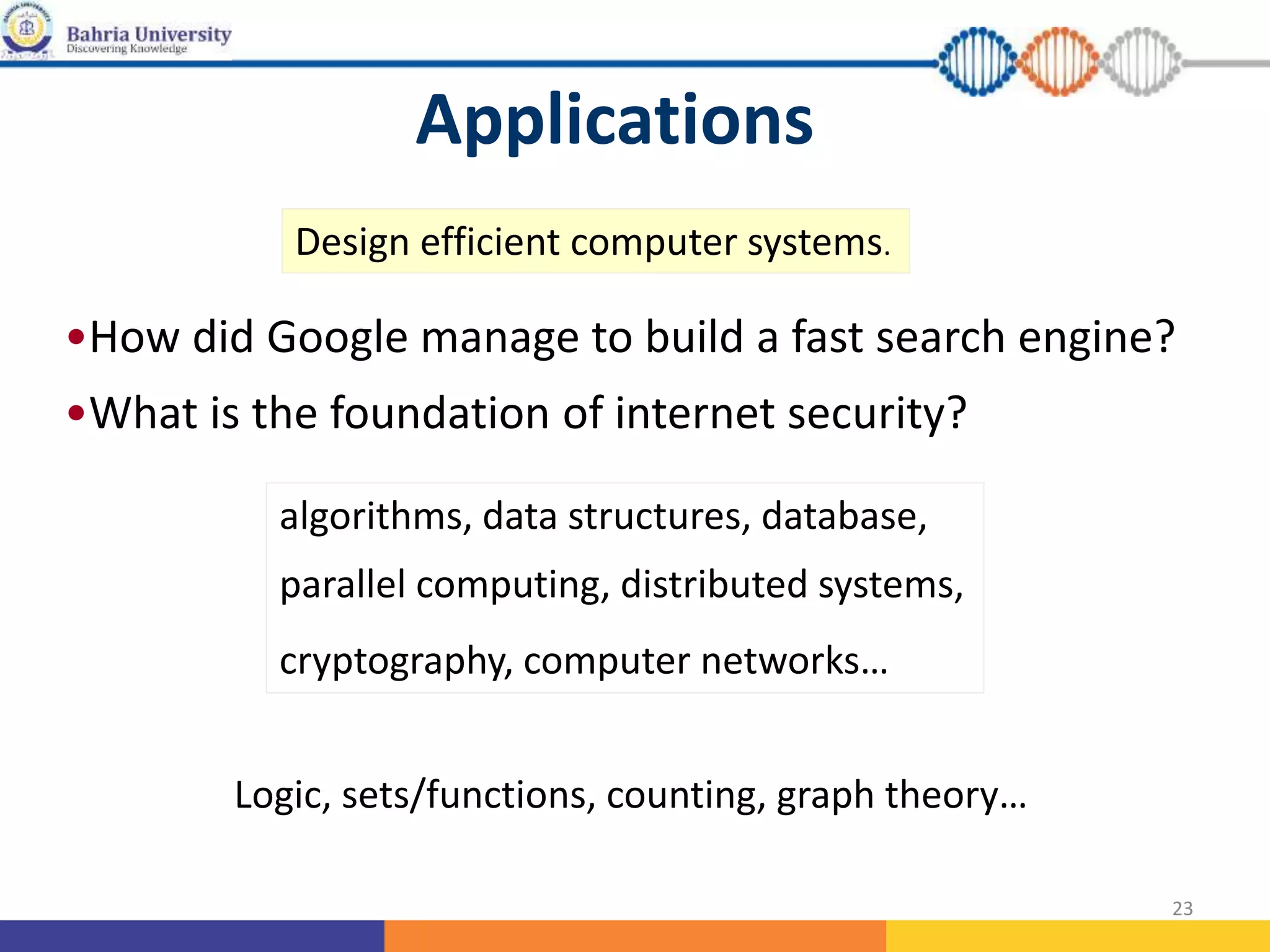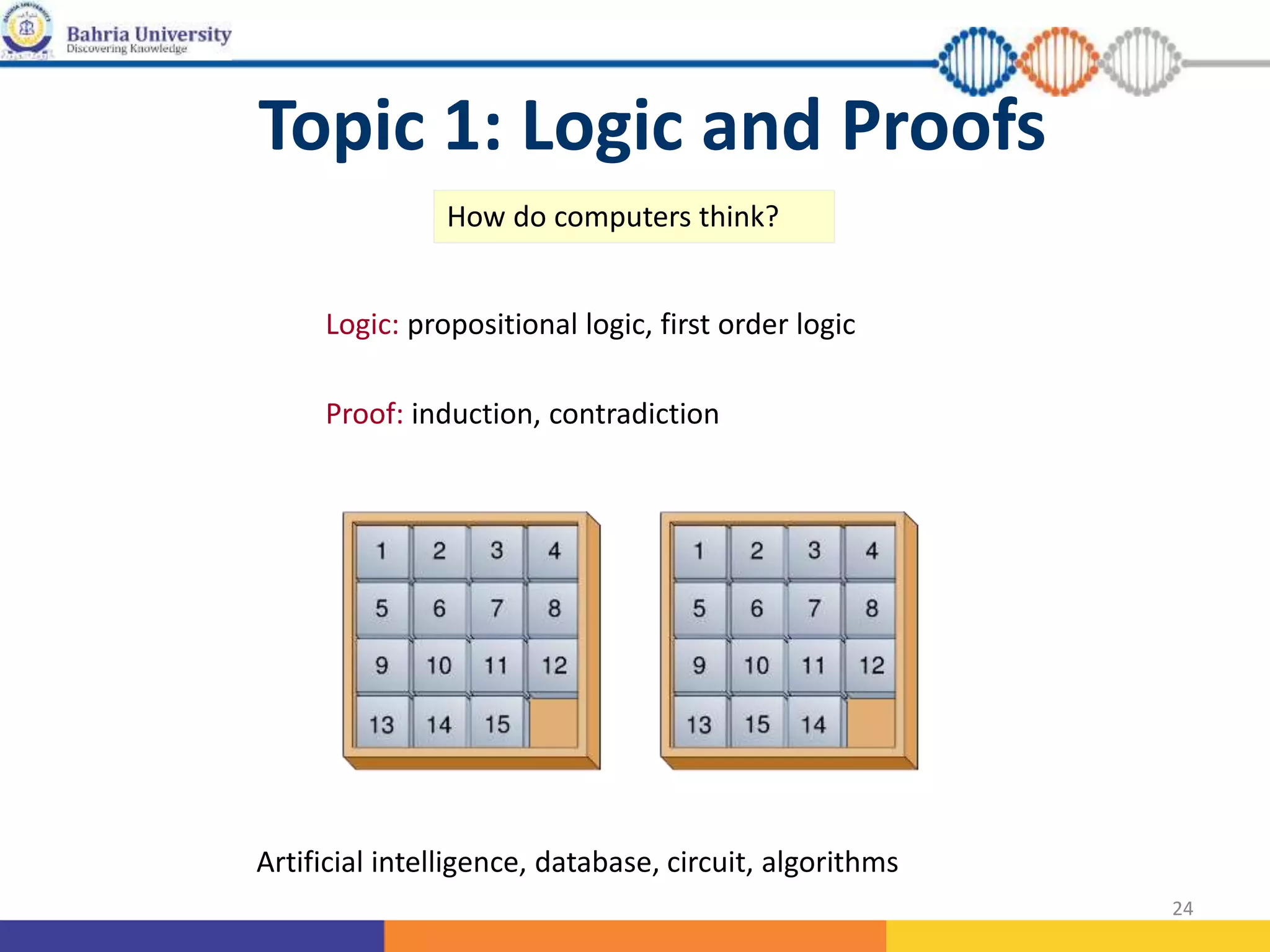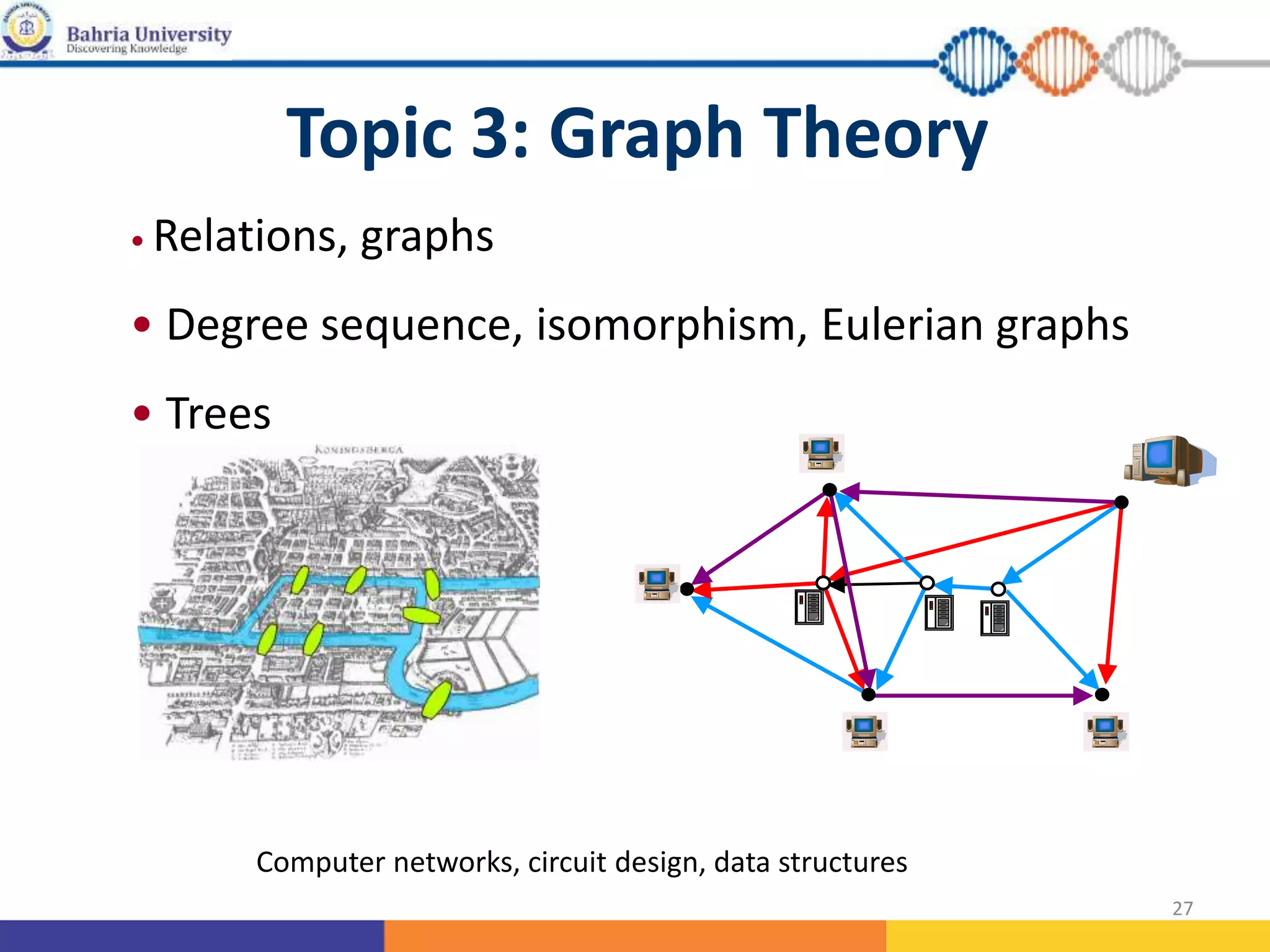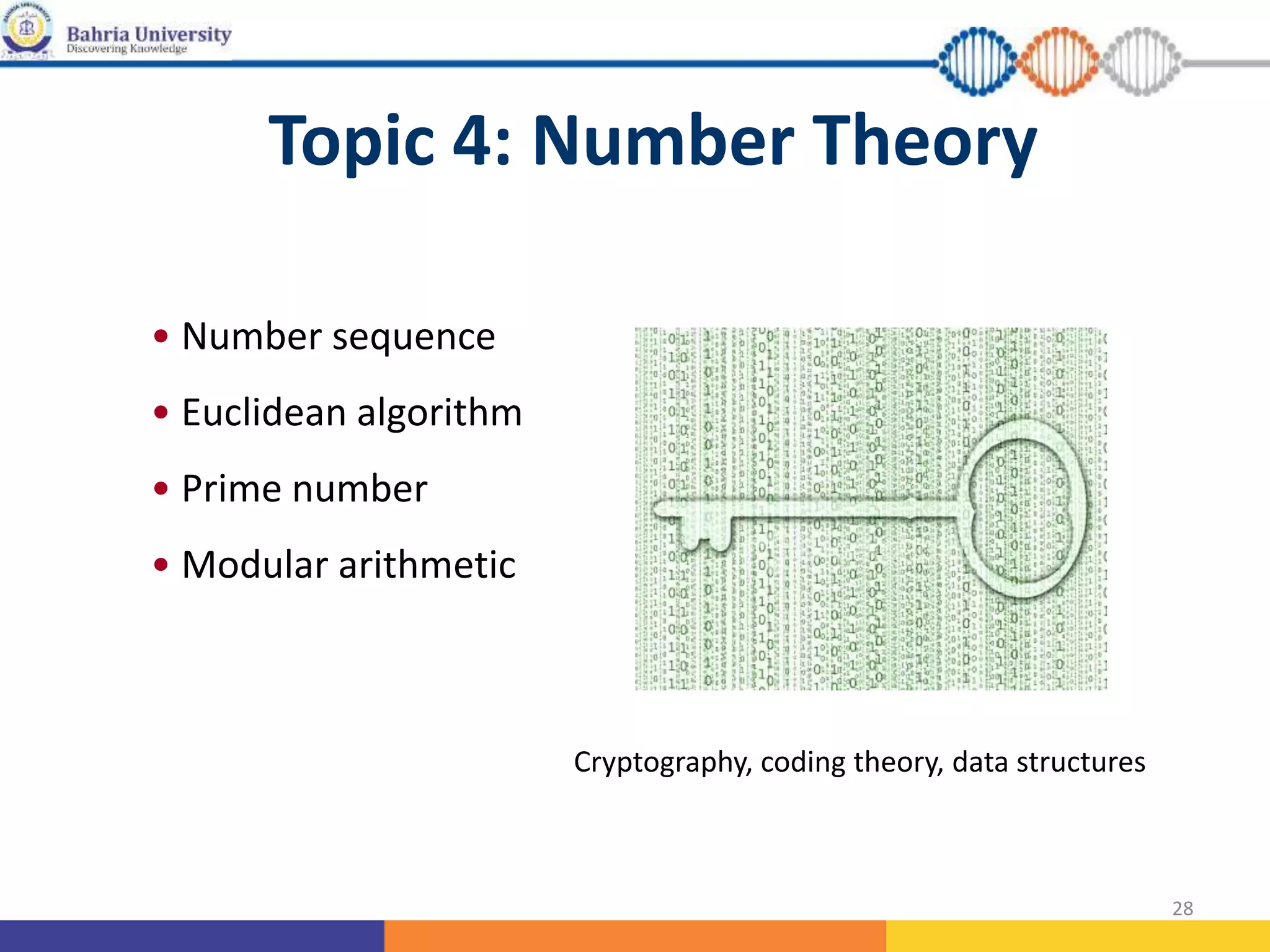This document provides information about a Discrete Mathematics course. It outlines the course objectives, which are to provide students with basic discrete mathematics knowledge and skills in mathematical reasoning, problem solving, and understanding abstract structures. The course learning outcomes include understanding logic, proofs, sets, counting principles, relations, functions, graphs, and trees. The course code, title, credit hours, books, and assessment breakdown are also noted. The document concludes with an introduction to the topics that will be covered, including logic and proofs, counting, graph theory, and number theory.









